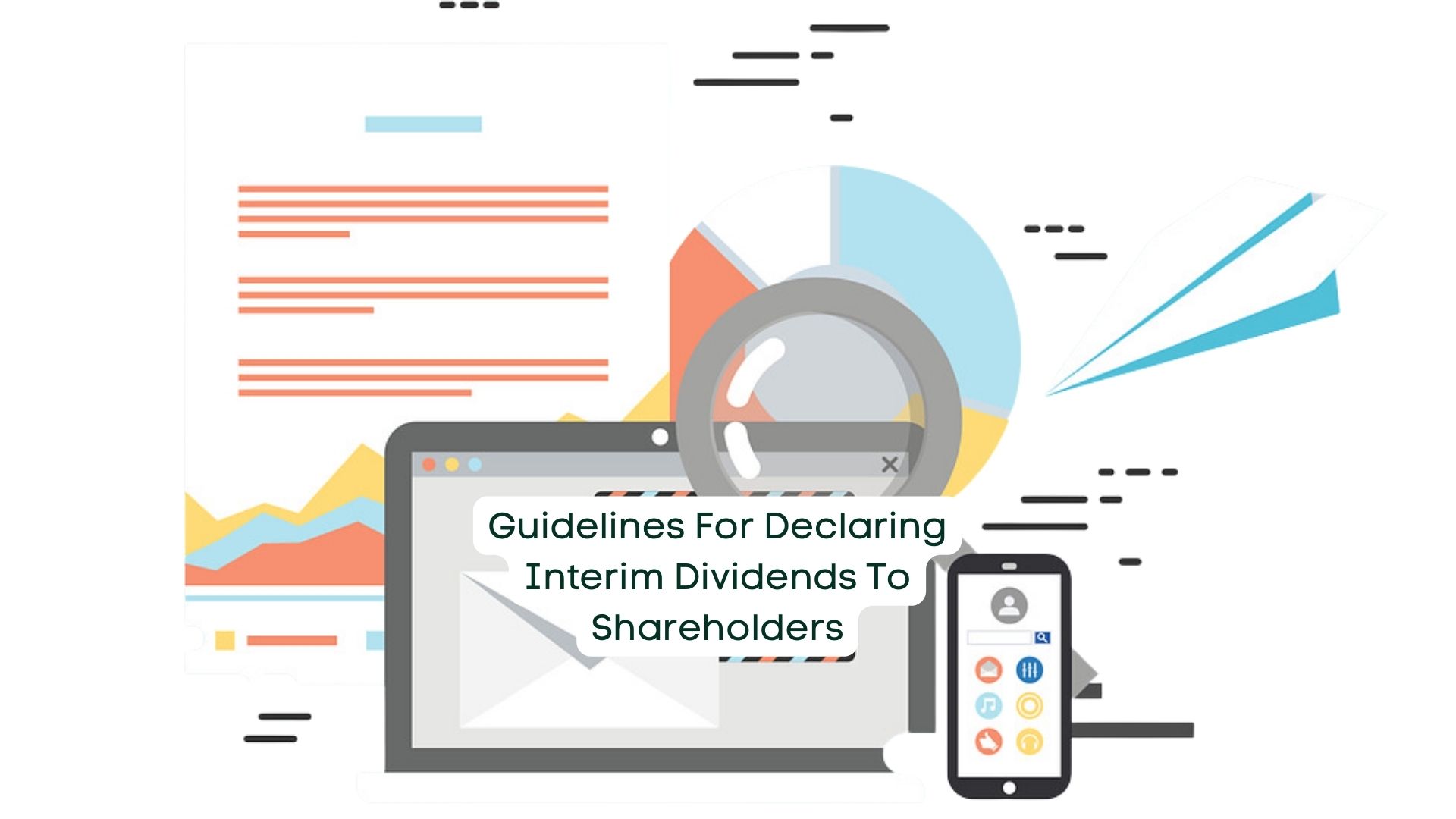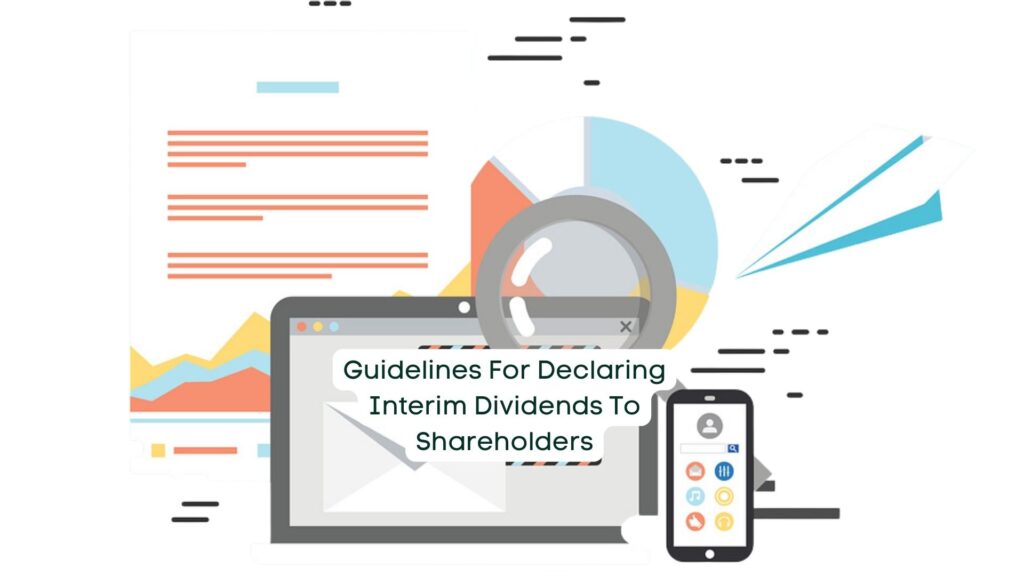
24 Feb Guidelines for Declaring Interim Dividends to Shareholders

A dividend represents a distribution of a company’s profits to its shareholders, typically in the form of cash or stock, determined by the company’s Board of Directors. The Companies Act of 2013 legally defines dividends as portions of net profits allocated to shareholders. This can also include interim dividends, which are distributed during the fiscal year. In this discussion, we delve into the concept of interim dividends and the protocols surrounding their declaration.
Understanding Dividends:
A dividend, by definition, signifies the allocation of a company’s profits to its shareholders. It can be disbursed in cash or stock, at the discretion of the Board of Directors.
Defining Interim Dividends:
Interim dividends are those declared by the board of directors during a fiscal year or between the close of the financial year and the Annual General Meeting, as outlined in section 123(3) of the Companies Act, 2013. These dividends can stem from various sources:
- Surplus in the profit and loss account.
- Profits from the current financial year.
- Income generated up to the quarter preceding the interim dividend announcement.
Reasons for Interim Dividend Declaration:
Companies opt to declare interim dividends when they experience profitability during the fiscal year and aim to share these profits with shareholders. Additionally, profits from the ongoing financial year might be utilized for interim dividend distribution. However, if a corporation faces losses in the current fiscal year, dividend rates are typically based on the average dividends of the previous three years.
Procedures for Declaring Interim Dividends:
- Payment authorization according to the company's articles.
- Issuance of a notice for a board meeting, mandated by section 173 of the Companies Act.
- Board meeting considerations, including financial viability, dividend rate recommendations, record date selection, and passing resolutions.
- Authorization to establish a dedicated bank account.
- Account opening within five days of declaration and deposit of payable dividends.
- Dividend payment within 30 days of announcement.
Declaration in Loss Periods:
In periods of losses, dividends can be paid from the firm’s free reserves, adhering to certain guidelines:
- Dividend rates should not exceed the average of the previous three years.
- Funds are used to offset losses incurred during the fiscal year.
- The amount withdrawn from accumulated earnings should not exceed one-tenth of the total paid-up share capital.
- The reserve balance post-withdrawal should not fall below 15% of the paid-up share capital, as per the latest audited financial statement.
Penalties for Non-Distribution:
Failure to distribute dividends within 30 days of declaration can lead to penalties for directors and the company, including imprisonment and fines.
Exceptions to Non-Distribution Penalties:
Certain circumstances exempt companies from penalties under section 127 of the Companies Act, such as legal constraints, disputes over recipient rights, or adjustments against shareholder debts.
Conclusion:
The declaration and distribution of interim dividends serve to strengthen the relationship between a company and its shareholders. It reflects the company’s profitability and future prospects. However, before declaring interim dividends, the board must ensure the company’s financial stability supports such payouts. Interim dividends are appropriate when a company achieves substantial profits for a portion of the year and anticipates continued success.


No Comments